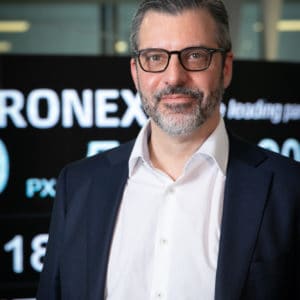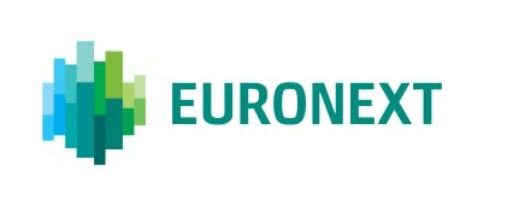
Kevin Wolf, CEO, Euronext FX
You recently rebranded FastMatch to Euronext FX – what does this name change reflect?
Kevin Wolf: The key objective of the rebranding was to confirm to the marketplace that Euronext is committed to the FX business. Additionally, Euronext has a strong brand name and reputation across a large community which includes many firms we are looking to bring onto the Euronext FX platform.
It is also important to understand that while Spot FX is an unregulated market, Euronext’s core expertise is in operating regulated markets. What our existing and potential customers infer from the re-brand and Euronext ownership is that we operate in an even more transparent, fair and robust way, with proper redundancy, compliance, risk, and all the infrastructure that you would desire of any trading platform with which you are interacting.
I do want to highlight that we have retained the FastMatch name for the technology, and there are a couple of reasons for that. Firstly, the FastMatch technology has a stellar reputation for speed, flexibility, continuous enhancement and unmatched functionality, and that is not changing. We also want customers to understand that while we are now operating under the Euronext FX brand name, we are not merging or replacing the FX technology with Euronext’s trading platform, Optiq.
Our business is integrated on multiple levels, and we work very closely with the rest of the Euronext family. At the same time, we have a dedicated client-facing team of FX specialists and a separate core technology stack, but we are working on harmonising certain mechanisms.
The re-branding also signifies the maturing of our organisation as we move into the next phase of our growth and strive to stay ahead of changes in market structure and regulation. A few examples to highlight include the recent naming of a new COO and a new head of Liquidity Management. Both individuals were previously acting in other capacities for Euronext FX and will further ensure that we can continue to scale our business and deliver on our strategic objectives, such as the launch of our fourth matching engine in Singapore.
How has Euronext FX evolved these past few years?
KW: When you are starting out operating a trading platform, building volume is critical and the cliché that liquidity begets liquidity is absolutely true. But you do get to a certain point where that’s no longer the primary goal. We are trying to grow in a way that makes our business sustainable and resilient to changes in market structure.
Specifically, we are growing and diversifying the client base, as well as continually examining and questioning how we operate the platform in order to constantly improve the trading experience for market participants.
We have changed some of the historical practices at Euronext FX, and there are more to come. For example, we no longer distribute real-time information about individual executed trades because we determined, in consultation with participants on our platform, that we were inadvertently contributing to too much information leakage, which was detrimental to our trading ecosystem.
How is the recent launch of your Singapore matching engine an important development for Euronext FX?
KW: Our presence in Asia is not as strong as it is in the US and in Europe, notwithstanding that we have an active matching engine in Tokyo. Our view is that the steps that the Monetary Authority of Singapore is taking to build an electronic FX infrastructure for Asia, based out of Singapore, will be very successful.
Several bank and non-bank liquidity providers are setting up their pricing engines in Singapore. We were the first ECN to announce a future launch and were the first to go-live. While we benefit from being part of a large, stable and mature organisation, we also have the ability to be nimble and do things that might take longer for other organisations. We had announced in March that the matching engine would go live in Q4 of this year and we are pleased that we, along with our clients, were able to go live with the first trade in early September.
What are the key strengths of the FastMatch technology?
KW: It always starts with speed and throughput – there’s a reason that the technology is called FastMatch. In addition to speed and throughput, we have a unique offering when it comes to functionality and order types. We operate a highly efficient, experienced and cohesive development team for the simple reason that we want to be agile, have flexibility to re-prioritise quickly, and continuously release new functionality.
It is quite encouraging to see that when volatility picks up, our relative performance does as well. In August, the market was much more volatile than it has been the rest of the year, we had our 3rd best month ever in terms of volume, and we gained share vs all of our peers who report Spot FX volumes. This is in large part due to the speed advantage of our platform – although many of the product, sales, liquidity management and development initiatives we’ve been pursuing have surely contributed as well.
We pride ourselves on having unique functionality that is valuable to the marketplace. For instance, we have functionality called Leak, Sweep, Protection (LSP), which allows liquidity providers to have Euronext FX implement last-look on their behalf. This is extremely powerful because it massively reduces information leakage for price takers.
One of the concerns about the traditional use of last look is that it allows liquidity providers to see orders from price takers, reject those orders, and then benefit from information embedded in seeing (but not filling) those orders. With our LSP functionality, the liquidity providers never see the orders that are rejected and thus the price taker is protected from information leakage.
How would you say Euronext FX differentiates itself from other players in the FX space?
KW: We are focused on growing the Euronext FX business, which can be challenging in a low volatility environment that has seen the size of the electronic Spot FX market shrink in 2019. Our growth over time will come from a variety of sources: (1) continuing to grow our client footprint, (2) geographic
expansion – as exemplified by our recent launch in Singapore, (3) product expansion as we add derivatives products to our current offering, which is Spot only today, and (4) market data, with the FX Tape being the primary example. In order for us to achieve our goals we need to have a great team and be sufficiently staffed.
In addition to the organisational changes mentioned earlier, we have also solidified the team with several key new hires. This summer we added five members to the team across New York, London and Singapore. Our ability to attract talent from tier 1 global banks and from our competitors reinforces for us that we are on the right path and have exciting times ahead.
